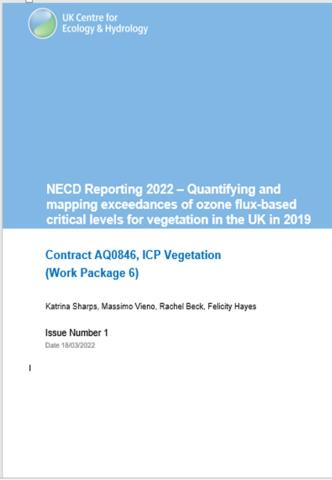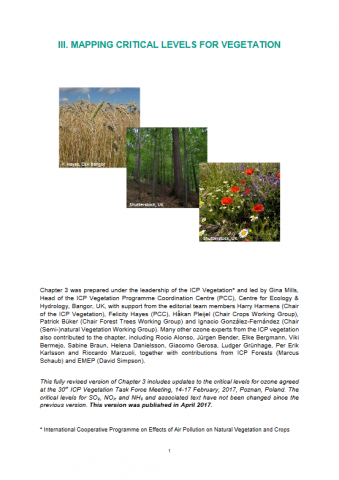Bibliography
.
2009. Evidence of widespread ozone pollution damage to vegetation in Europe (1990-2006) - Leaflet.
.
2011. Evidence of widespread effects of ozone on crops and (semi-)natural vegetation in Europe (1990-2006) in relation to AOT40-and flux-based risk maps. Global Change Biology. 17:592-613.
.
2007. A synthesis of AOT40-based response functions and critical levels of ozone for agricultural and horticultural crops. Atmospheric Environment. 41:2630-2643.
.
2018. Ozone pollution will compromise efforts to increase global wheat production.. Global Change Biology. 24:3560-3574.
.
2007. Identifying ozone-sensitive communities of (semi-)natural vegetation suitable for mapping exceedance of critical levels. Environmental Pollution. 146:736-743.
.
2020. Organochlorines burden in moss H. cupressiforme and topsoil across Serbia. Environmental Geochemistry and Health.
.
2007. Predicting community sensitivity to ozone, using Ellenberg Indicator values. Environmental Pollution. 146:744-753.
.
2009. First thorough identification of factors associated with Cd, Hg and Pb concentrations in mosses sampled in the European Surveys 1990, 1995, 2000 and 2005. Journal of Atmospheric Chemistry. 63:109-124.
.
2008. Impacts of nitrogen on vegetation.
.
2020. Ozone impacts: Legumes.
.
2007. Meta-analysis of the relative sensitivity of semi-natural vegetation species to ozone. Environmental Pollution. 146:754-762.
.
2006. Impacts of summer ozone exposure on the growth and overwintering of UK upland vegetation. Atmospheric Environment. 40:4088-4097.
 ]
] 
